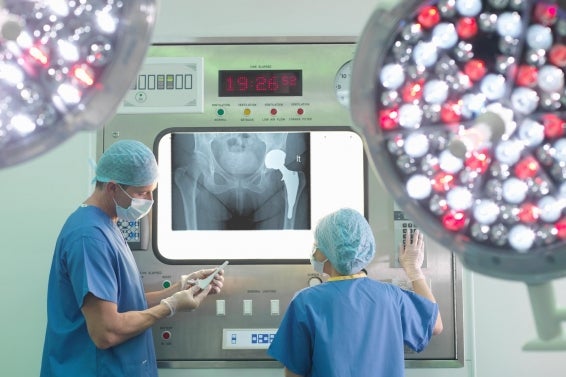View Providers
Once upon a time, hip replacement surgery was seen as a procedure
reserved for the elderly, but today that has changed. People in their 50s and early
60s regularly undergo hip replacement, and even some much younger patients are
getting new hips too. Almost a third of those who have the implants are between
the ages of 45 and 64—nearly a threefold increase for that age range in a
little more than 10 years. Here are a few factors driving the trend.
New types of implants mean new possibilities.
Hip replacement surgery has a very high success rate, and recent
innovations have extended the life of hip implants and reduced the number of
complications. That makes them more practical for people who have many active years
ahead of them, since you can expect a new hip to last 15 to 20 years or longer.
Most hip replacements in younger people use a newer technique
that encourages bone to grow into the implant. Recovery can take longer than in
other kinds of hip surgery, because it takes time to grow the bone, but the
method secures the implant firmly in place. These newer implants are very durable
and resistant to wear from stress and strain, which may result in fewer
restrictions on daily activities.
Though artificial joints need repair or replacement at
higher rates in younger patients because they are much more active, doctors can
replace a failed implant with a procedure called revision surgery. It’s important
to know, however, that revision surgery is more complex than an original
implant and comes with a higher rate of complications.
Hip replacement can address hip problems that began early in life.
For people whose hips have been injured in a childhood accident
or by diseases like juvenile arthritis, hip replacement surgery can mean significantly
better quality of life and less pain at an earlier age. While non-surgical
options to relieve discomfort should be tried first, including pain medication,
an exercise program and physical therapy, your doctor may recommend surgery if
you still find that your ability to go about your daily routine is affected by
your hip condition.
Most people who have a hip replacement find that their pain
has lessened within a week and see a great deal of improvement in mobility,
energy, and the ability to function within three months. With younger people,
who are often in better health than seniors, a hospital stay can be little more
than a day and you may be walking without assistance in two or three weeks. The
more motivated you are to stick to your post-operative rehab, the better you
will probably do.
Hip replacements can last for decades.
The longevity of hip replacements is impressive. In one
study that began in the 1970s, researchers followed a group of people who
received hip replacements between the ages of 18 and 49. Thirty-five years on,
almost half of those still living had their original implants. With the
improvements in the procedure and materials since then, it is likely the
success rate is even higher. That makes hip replacement at a younger age more
attractive since there is a good possibility your new hip may outlast you.
Today,
a person’s overall health and activity level are more important than age in
predicting a hip replacement’s success. If you’re under 65 but feel that hip
pain and weakness are affecting your quality of life, talk to your doctor about
whether you might be a candidate for hip replacement. It’s not your father’s
surgery anymore.





